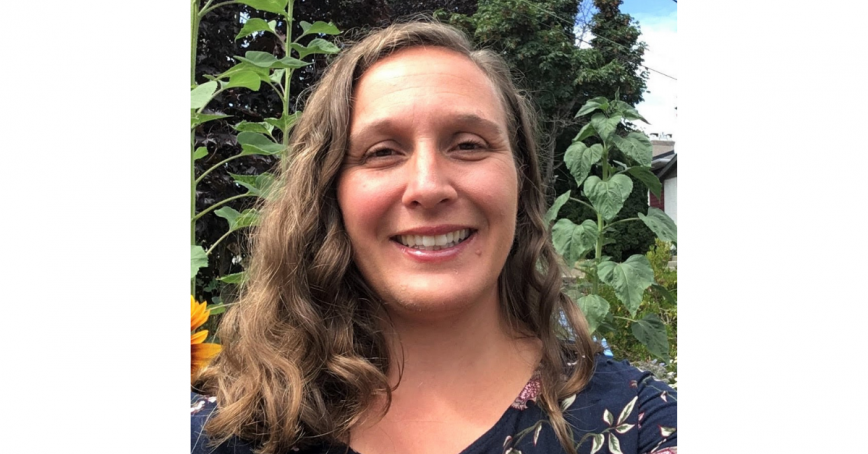Teaching climate change "outside the box"
Topics
Featured
Share online

Chloe Faught is a teacher and a mother, and she feels lonely and caged.
The Vancouver Island high school educator opens a poem she recorded for her thesis in the Master of Arts in Environmental Education and Communication (MAEEC) program with those spoken words, as a slightly unconventional approach to her thesis. “I teach in a box,” she says in the video, “and I am buried by the intentions of a system to educate everybody by the same standard.”
Faught teaches Grade 11 and 12 biology, science, social studies, and geography at Stelly's secondary, as well as with the South Island Distance Education School. She came to RRU to help create a better world and hopes to transform culture.
“In a time of global environmental crisis, when humans stand on a precipice, can we change to save ourselves?” her poem asks.
After graduating from the University of Victoria with a geography degree, Faught did some shortgrass prairie field work in Wyoming and worked for Environment Canada, then in water services for the Capital Regional District. But it was being a group leader with Girl Guides of Canada that unearthed her love for teaching, especially the backpacking trips.
Faught also traveled with her husband, Chris McDonald, another MAEEC graduate, to teach English and geography in a small village called Omungwelume in the Republic of Namibia, on the Angola border. Most of the students in Omungwelume had never traveled outside their village or beyond neighbouring towns.
Teaching with passion
Faught earned her teaching degree after returning from Namibia. She has a passion for the environment and climate change but found initially that neither was really being recognized much in the BC curriculum.
“I feel like students had a lot of anxiety over the environment, and we were sort of teaching about it, but not how to make a difference, how to move forward on some of these issues.”
She wanted to know: “How do we teach them in a way that grabs the students, but doesn't terrify them into apathy?”
Faught enrolled in the blended MAEEC program at RRU in 2018, when the youngest of her two children was a year old and she was on parental leave. At Royal Roads, she learned about systems theory, and the scale of actions that lead to change, called leverage points. Schools are part of a large, complex system with a long, ingrained history, so change can difficult.
“It will take everyone, metaphorically holding hands across the globe, to create time and space to make change” adds Faught, who is also president of the Salish Sea Local Chapter of Environmental Educators Professional Specialist Association, a non-profit organization she founded through the BC Teachers' Federation.
“Can we unbind our minds enough so we can all feel the thrum of the earth?” she asks in her piece.
“More hands-on”
Faught thinks part of the solution to teaching about climate change is more hands-on experience.
On one field trip, she took her students on a mountain hike in LÁU,WELNEW/John Dean Provincial Park with an Indigenous Elder. Walking up to the viewpoint, the students heard stories of the land.
“Looking at the land, seeing evidence of past glaciers, and seeing how the land is used, and talking about how things have been, they learned how the land has changed over time, by actually looking at it.”
Faught wants to get students outside more to learn about the world and the environment.
“Really connecting students to what I think is authentic learning rather than just watching things on screens or writing notes and talking about it.”
She wants to teach them to become active citizens.
“This is not just about who I am, but who I am becoming,” Faught says in the video poem. “I'm here. Come join me.”